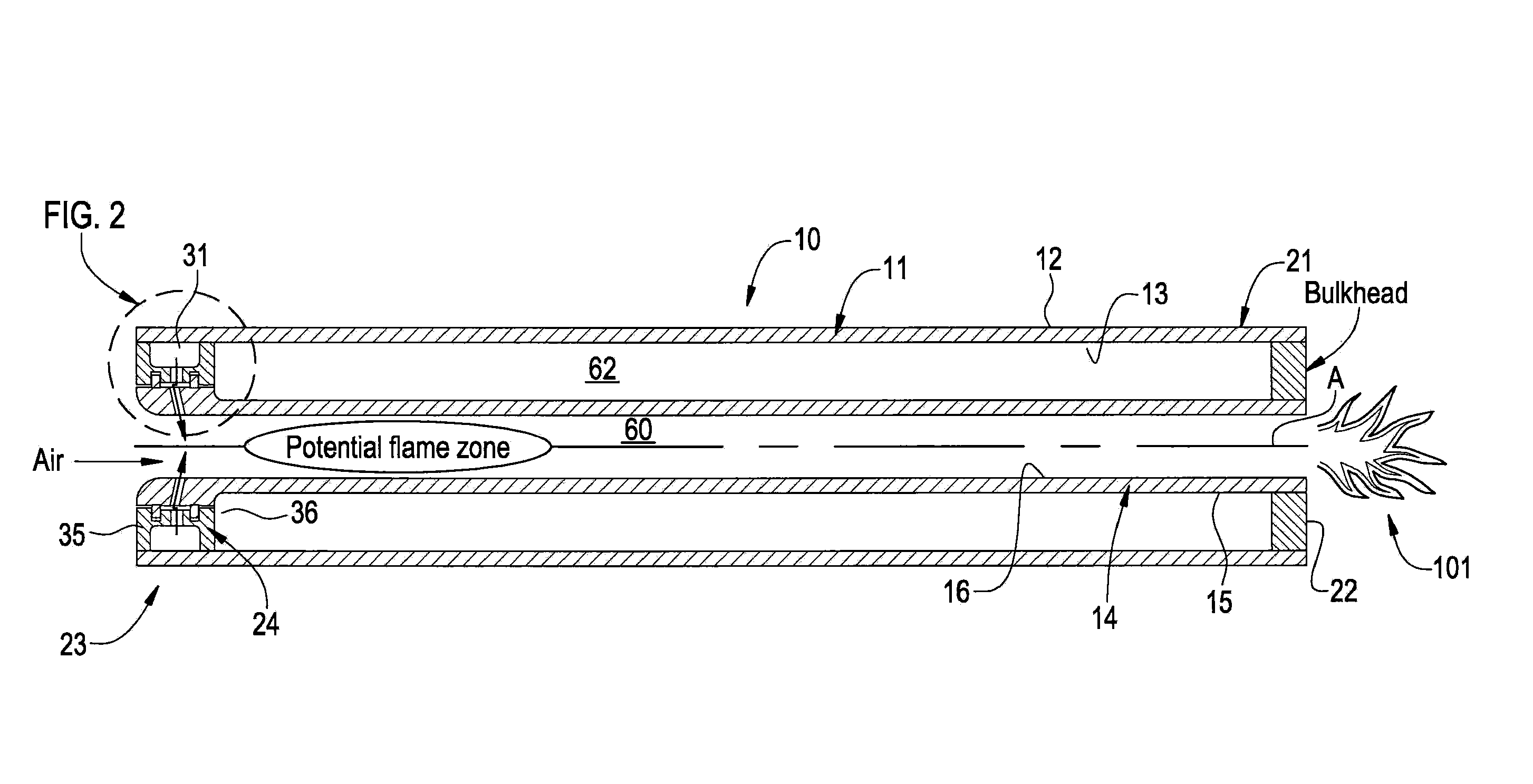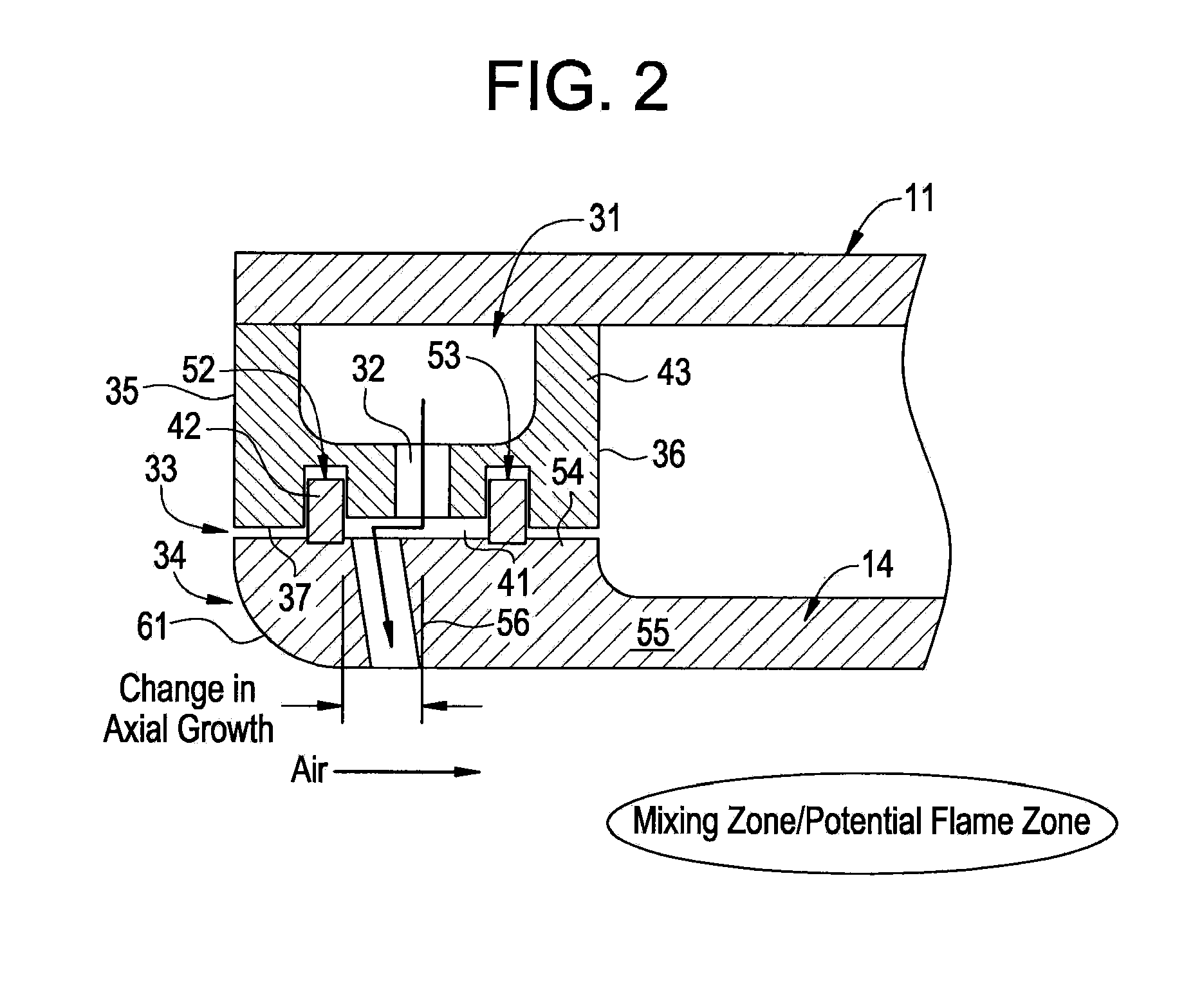Fuel nozzle assembly
a technology of fuel nozzles and assembly parts, which is applied in the direction of combustion types, lighting and heating apparatuses, instruments, etc., can solve the problems of destroying the fuel nozzle, difficult to determine whether or not a flashback has occurred, and more difficult to keep the flame out of the fuel nozzl
- Summary
- Abstract
- Description
- Claims
- Application Information
AI Technical Summary
Problems solved by technology
Method used
Image
Examples
Embodiment Construction
[0017]The present invention of a passive fuel extinction and nozzle is intended to shut off the fuel feed supplied to the fuel nozzle if a flame enters the nozzle. While one end of the nozzle body and nozzle tube is fixed, the opposite end is free to grow due to thermal expansion caused by the flame. The thermal growth causes one of the fuel injection orifice (or hole) to translate relative to the gas passage from a position generally in alignment that forms a fuel flow path therebetween. When the orifice and passage translate out of alignment, gas injection is blocked between the fuel plenum and the interior of the nozzle. As a result, the flame will go out.
[0018]Referring now to FIG. 1, where the invention will be described with reference to specific embodiments, without limiting same, a cross-section through a fuel nozzle 10 is shown. Fuel nozzle 10 includes an outer nozzle body 11 having an outer circumferential surface 12 and an inner circumferential surface 13. Fuel nozzle, 10...
PUM
 Login to View More
Login to View More Abstract
Description
Claims
Application Information
 Login to View More
Login to View More - R&D
- Intellectual Property
- Life Sciences
- Materials
- Tech Scout
- Unparalleled Data Quality
- Higher Quality Content
- 60% Fewer Hallucinations
Browse by: Latest US Patents, China's latest patents, Technical Efficacy Thesaurus, Application Domain, Technology Topic, Popular Technical Reports.
© 2025 PatSnap. All rights reserved.Legal|Privacy policy|Modern Slavery Act Transparency Statement|Sitemap|About US| Contact US: help@patsnap.com



